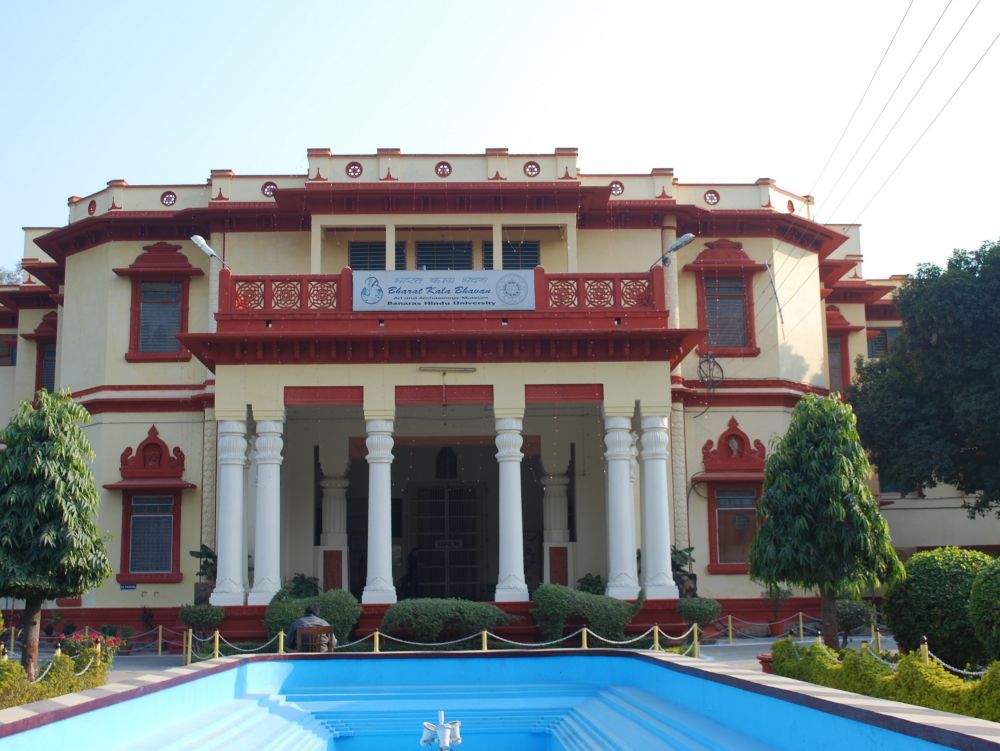

The Bharat Kala Bhavan Museum is an exemplary treasure trove of Indian art and culture, situated in the illustrious city of Varanasi, Uttar Pradesh, India. Known for its sacred ghats and vibrant traditions, Varanasi has been a historical hotspot for tourists and pilgrims alike. The museum itself is located within the sprawling campus of Banaras Hindu University (BHU), one of India's eminent educational institutions founded by Pandit Madan Mohan Malviya in 1916.
The museum was established in 1920 by the then Vice-Chancellor of Banaras Hindu University, Sarvepalli Radhakrishnan, who later became the second President of India. It was born out of the need to preserve the rich cultural heritage that Varanasi embodied. The idea came to fruition under the guidance of Rai Krishnadasa, a noted historian and then curator of the museum. The institution has been narrating the glorious past of the region, through various artifacts, paintings, textiles, and historical documents since its inception.
Bharat Kala Bhavan houses an extensive collection, which includes over 100,000 artifacts that are symbolic of the broad spectrum of South Asian artistic excellence. Some of the key attractions are the miniature paintings, sculptures dating back to the 1st century, ancient manuscripts, Mughal rugs, and an impressive compilation of personal items belonging to the Royal families of India.
Over the years, the museum has grown to become a pivotal part of Varanasi's tourist attractions. Historically, Varanasi has always been a magnet for spiritual seekers and culture enthusiasts from around the world. The city's portrayal in various travelogues has attracted international attention, escalating its status as a must-visit destination on the cultural map. Bharat Kala Bhavan, as one of the landmarks in Varanasi, has played a significant role in complementing the historical and cultural tourism circuit of the city.
Recent trends in tourism have seen a shift towards more than just traditional sightseeing. Tourists visiting Varanasi are now actively seeking immersive cultural experiences. As a result, interactive tours, workshops, and educational programs conducted by Bharat Kala Bhavan are becoming increasingly popular. These engagements are enhancing the role of the museum as an educational hub, apart from being a tourism site, thereby providing a deeper understanding and appreciation of India’s artistic legacy.
Opening Hours: The Bharat Kala Bhavan Museum is open from Monday to Saturday, usually from 10:30 am to 4:30 pm. It is closed on Sundays and university holidays.
Entry Fee: The museum has an entry fee, which is nominal, and there may be additional charges for photography.
Guided Tours: The museum offers guided tours for those interested in an in-depth exploration of its exhibits. These tours can provide valuable insights into the artifacts on display.
In conclusion, Bharat Kala Bhavan Museum not only reinforces the historical significance of Varanasi but also reflects the evolution of tourism in the city. It stands as a testament to the preservation of Indian culture and continues to attract a diverse crowd of visitors year-round, contributing significantly to the tourism history of Varanasi.